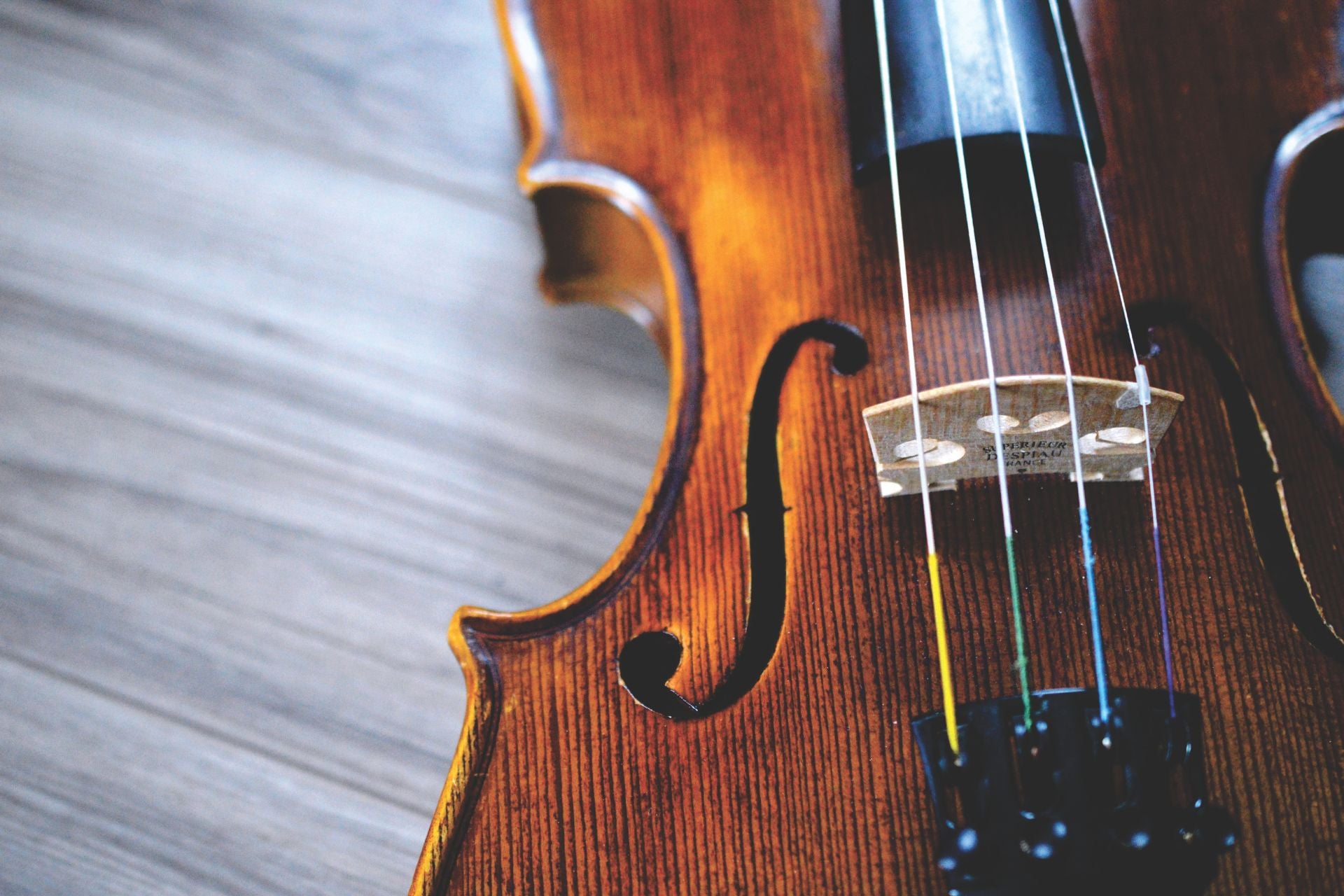General Articles
The Physics of Violin Acoustics: Unveiling the Secrets Behind the Enchanting Sound
When you hear the melodic strains of a violin, you're listening to an instrument that has captivated audiences for centuries. The violin's distinctive timbre and resonant sound are not merely products of chance; they arise from the intricate interplay of physics and craftsmanship.
In this exploration of "The Physics of Violin Acoustics," we'll dive into the scientific principles that underpin the enchanting sound of the violin, uncovering the role of its components and the craftsmanship behind its creation.
The Anatomy of a Violin: A Perfect Balance of Form and Function
The violin, a string instrument is a harmonious fusion of artistry and science. Its body consists of various components, each contributing to its unique sound. These include the top plate (the soundboard), the back plate, the sides (ribs), the soundpost, and the bass bar. Each of these elements plays a crucial role in transmitting, amplifying, and shaping sound waves.
The Soundboard and its Role in Resonance
The soundboard, typically made from spruce, is the heart of the violin's resonance. Its curvature and thickness determine the frequencies it can amplify, producing the violin's characteristic tones. As the strings vibrate, they transmit energy to the soundboard, which then resonates and amplifies the sound waves.
The F-Holes and Acoustic Projection
The iconic F-shaped holes on the violin's soundboard aren't just for aesthetics; they are carefully designed openings that facilitate the movement of air, enhancing the projection of sound waves. The F-holes contribute to the violin's ability to project its sound to a broader audience.
The Role of Resonance and Modes of Vibration
The violin's resonant properties are governed by its modes of vibration. As the strings are played, they create different patterns of vibration within the violin's body. These patterns, known as modes of vibration or resonances, contribute to the complex timbre of the instrument.
The Modes of Vibration: Chladni Patterns
Chladni patterns are visual representations of the modes of vibration in a vibrating surface. When a bow is drawn across a violin string, these patterns become visible on the soundboard. Different modes produce intricate patterns that help luthiers understand and refine the violin's construction for optimal resonance.
The Role of the Bridge and Soundpost
The bridge and soundpost are small but critical components that ensure the violin's proper functioning and sound production.
The Bridge: Transmitting Vibrations
The bridge acts as a transmission point, transferring vibrations from the strings to the soundboard. Its position and shape influence the instrument's playability and tonal quality. A well-constructed bridge enhances the transfer of energy, resulting in a more resonant sound.
The Soundpost: Internal Support
The soundpost is a small wooden dowel located inside the violin, connecting the top and back plates. It provides structural support and contributes to the instrument's tonal balance by distributing vibrations between the plates.
Craftsmanship and the Art of Violin Making
Creating a violin is a meticulous process that requires a deep understanding of the instrument's acoustics and the selection of appropriate materials.
Wood Selection: A Crucial Decision
The choice of wood, such as spruce for the soundboard and maple for the back and sides, significantly influences the violin's sound. The wood's density, grain structure, and acoustic properties all contribute to the final sonic result.
Graduating the Plates: Precision Matters
The thickness and graduation of the plates are carefully calibrated to achieve optimal resonance. Luthiers meticulously carve, shape, and thin the plates to achieve a delicate balance between strength and flexibility.
Rhythm Music Shop: Your Destination for Exceptional Violins
At Rhythm Music Shop, we understand the magic that unfolds when art and physics converge in the creation of a violin. Located in Markham, we proudly serve Markham, Richmond Hill, Vaughan, and the Greater Toronto Area (GTA) with a curated selection of exquisite violins crafted to perfection.
Bringing the Enchantment of Violin Music to Markham
Our Markham store is a haven for music enthusiasts, providing a space where violinists of all levels can explore, learn, and find the perfect instrument. Whether you're a budding musician or an experienced player, our knowledgeable staff is here to guide you toward the violin that resonates with your musical aspirations.
Extending Our Reach to Richmond Hill, Vaughan, and the GTA
Our commitment to serving the GTA extends beyond our Markham location. For those in Richmond Hill, Vaughan, and surrounding areas, our online store offers a seamless shopping experience, allowing you to browse our collection of violins from the comfort of your home.
Experience the Harmonious Fusion of Science and Art
The violin's alluring sound is a testament to the precision of physics and the creativity of craftsmanship. As we've uncovered in this exploration of "The Physics of Violin Acoustics," the violin's resonant qualities are the result of a harmonious interplay of components, modes of vibration, and skilled construction.
At Rhythm Music Shop, we celebrate this enchanting convergence and invite you to experience it for yourself. Whether you visit our Markham store or explore our online offerings, we're here to help you discover a violin that echoes your musical journey.

